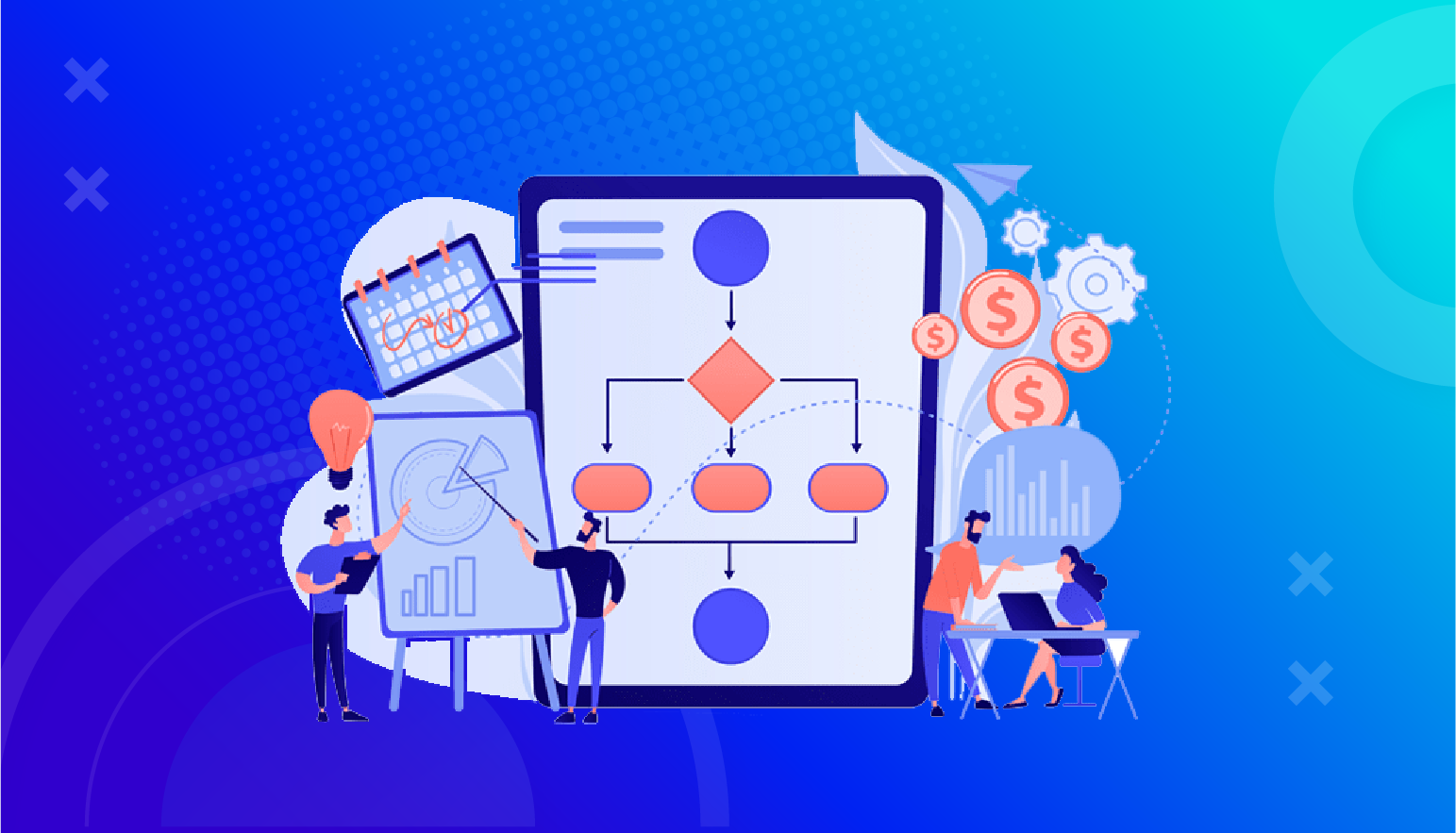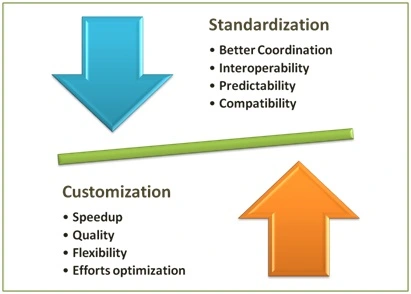Customization vs. Standardization: Finding the Right Balance for Business Process Models
February 13, 2024 in Enterprise architecture, Business architecture, Business process reengineering3 minutes
Find the right balance between business process customization and standardization. Understand the advantages and limitations of each approach. Learn how to optimize operations through flexible customization and efficient standardization.
Customization vs. Standardization: Finding the Right Balance for Business Process Models
Introduction

Organizations today face a constant debate between customization and standardization when designing their business process models. Customization provides flexibility to meet unique needs, while standardization enables efficiency through proven best practices. This article examines the advantages and disadvantages of each approach, provides guidance on finding the optimal balance, and answers common questions managers have regarding this decision.
Understanding Customization
Customization involves tailoring business processes to match an organization’s specific requirements and objectives. Some key advantages of customization include:
- Flexibility to adapt to changing conditions and new opportunities
- Competitive differentiation through unique value propositions
- Improved efficiency by eliminating redundant steps
However, customization also has some limitations:
- Higher costs for development and maintenance
- Complexity in managing customized processes
- Lack of standardization leading to inconsistencies
Overall, 46% of organizations surveyed rely heavily on customization for their critical processes.
Examining Standardization
Standardization focuses on adopting standardized, proven business process models across the organization. Benefits of standardization include:
- Increased efficiency through streamlined operations
- Quality control through established best practices
- Enhanced collaboration across teams
But standardization also poses some downsides:
- Lack of flexibility to meet unique needs
- Resistance to change from employees
- Loss of competitive differentiation
Industry research shows 74% of organizations leverage standardized processes for non-critical back-office functions.
Finding the Right Balance

Determining the optimal balance depends on various factors:
- Assessing requirements across all business functions
- Researching industry standards and best practices
- Engaging stakeholders to gain buy-in
- Prioritizing flexibility where needed
- Managing change to drive adoption
Key guidelines include:
- Customize critical customer-facing processes
- Standardize back-office and administrative processes
- Involve managers and staff in decision-making
- Provide training and support on new standardized processes
FAQ
Q: What are the main differences between customization and standardization?
A: The main differences are flexibility vs consistency, and tailored processes vs proven best practices.
Q: Can both approaches be combined?
A: Yes, organizations can achieve an optimal balance by customizing critical processes while standardizing non-core areas.
Q: How does customization help organizations?
A: Customization provides flexibility to meet specific business needs, differentiate from competitors, and improve efficiency.
Q: What benefits does standardization offer?
A: Standardization enables increased efficiency, quality control, and collaboration through proven models.
Q: How do we determine the right balance for our needs?
A: Assessing requirements, engaging stakeholders, prioritizing flexibility, and managing change can help determine the optimal blend.
Conclusion
Finding the right mix of customization and standardization is crucial for business process success. Assess where customization provides strategic advantages, while leveraging standardization to drive efficiency. With an informed balanced approach, organizations can optimize their operations in today’s dynamic business landscape.